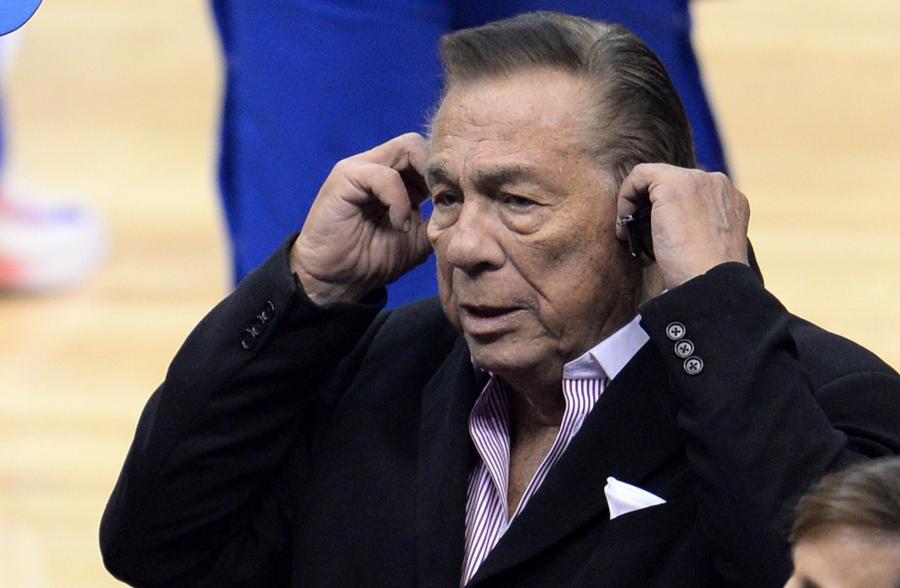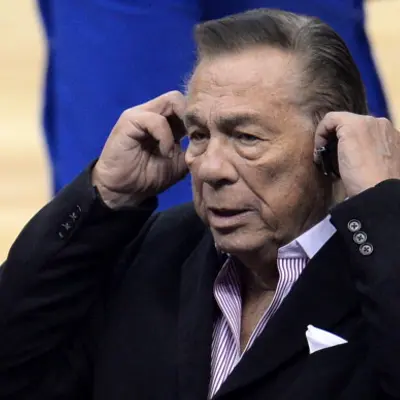Donald Sterling at a Glance
- Categories: Business > Billionaires, Business
- Net Worth: $4 Billion
- Birthdate: Apr 26, 1934 (90 years old)
- Birthplace: Chicago
- Gender: Male
- Profession: Lawyer, Businessperson
- Nationality: United States of America
Donald Sterling’s Net Worth: A Look at the Controversial Billionaire
Introduction: The Rise and Fall of Donald Sterling
Donald Sterling, a name synonymous with both immense wealth and profound controversy, amassed a significant fortune throughout his career. Best known for his ownership of the Los Angeles Clippers NBA team, Sterling’s life is a complex narrative of business acumen, legal battles, and ultimately, a dramatic downfall. This article delves into the life, career, and net worth of Donald Sterling, exploring the various facets that shaped his legacy.
Early Life and Education
Born Donald Tokowitz on April 26, 1934, in Chicago, Illinois, Sterling’s early life was marked by his family’s Ashkenazi Jewish heritage. His parents, Susan and Mickey Tokowitz, immigrated to the United States, seeking a better life. When he was just two years old, the family relocated to Los Angeles, where he would spend his formative years in the Boyle Heights neighborhood. Sterling’s education began in Los Angeles, where he attended Theodore Roosevelt High School. A well-rounded student, he was a member of the gymnastics team and served as class president, showcasing leadership qualities early in life. He pursued higher education at California State University, Los Angeles, graduating in 1956, and later attended Southwestern University School of Law, earning his law degree in 1960. In a strategic move, Sterling and his wife Shelly changed their last name from “Tokowitz” to “Sterling” in 1959, aiming for improved social and financial opportunities.
Building a Real Estate Empire
After completing law school, Sterling embarked on his professional journey in 1961 as a divorce and personal injury attorney. However, he soon diversified his interests and ventured into real estate, a move that would ultimately define his wealth. Recognizing the limited opportunities for Jewish attorneys in prominent law firms at the time, Sterling established his own practice. His real estate investments began with the purchase of a 26-unit apartment building in Beverly Hills, a starting point for what would become a vast property portfolio. Throughout the 1960s, Sterling continued to acquire properties, including Lesser Towers, two large apartment buildings in Westwood, which he renamed Sterling Towers. He also leased the California Bank Building in 1976, renaming it Sterling Plaza. By April 2014, he owned an impressive 162 properties throughout the Los Angeles area, extending his investments to Orange County, San Diego, and Las Vegas. Despite his legal background, Sterling faced a lawsuit filed by an actress, Robyn Cohen, who lost her belongings in a fire at a West Hollywood apartment building owned by Sterling. The jury ruled against him, ordering him to pay $17.3 million.
The Turbulent Reign as LA Clippers Owner
In 1981, a pivotal moment arrived when Sterling, at the suggestion of Jerry Buss, who owned the Los Angeles Lakers, purchased the San Diego Clippers for $12.5 million. At the time, the Clippers were a struggling franchise, and Sterling promised to invest heavily in the team’s development. However, the Clippers struggled initially, failing to achieve a winning season for over a decade. Sterling’s ownership was marked by a frugal management style, which drew criticism. Despite these challenges, the Clippers experienced a period of resurgence in the early 2010s, with the acquisition of star players such as Blake Griffin and Chris Paul. Sterling’s attempts to move the team to Los Angeles, initially blocked by the NBA, eventually led to the team’s relocation, albeit accompanied by a hefty fine. The Clippers played in various venues, including the Los Angeles Memorial Sports Arena, Arrowhead Pond of Anaheim, and eventually, the Staples Center. Sterling invested $50 million in a state-of-the-art practice facility in the Playa Vista neighborhood of Los Angeles, which opened in 2008. While the team’s value grew over time, reaching $700 million in 2013, Sterling faced considerable criticism. He was often labeled as one of the worst owners in sports.

ROBYN BECK/AFP via Getty Images
The Racist Controversy and NBA Ban
The most significant controversy of Sterling’s career erupted in April 2014, when recordings of a conversation between him and his mistress, V. Stiviano, were made public. The recordings contained racist remarks that sparked widespread outrage and condemnation. The NBA responded swiftly and decisively. Then-NBA Commissioner Adam Silver announced a lifetime ban for Sterling from the NBA, along with a $2.5 million fine. He was also stripped of his authority over the team and banned from all Clippers facilities. Furthermore, Silver initiated proceedings to force Sterling to sell the team, citing his violation of league rules.
The Clippers Sale and Aftermath
Following the controversy and the NBA’s actions, Sterling was compelled to sell the Los Angeles Clippers. In May 2014, his wife, Shelly Sterling, negotiated a deal to sell 100% of the team to former Microsoft CEO Steve Ballmer for $2 billion. This sale marked a significant turning point in Sterling’s career and effectively ended his association with the NBA. The sale of the Clippers was one of the most high-profile team sales in sports history.
Personal Life and Family
Donald Sterling married Rochelle “Shelly” Stein in 1957, and together they had three children. Their marriage, however, became strained, and they separated in 2012. Tragically, Sterling’s eldest son, Scott, passed away in 2013 from an apparent drug overdose in his Malibu apartment, adding another layer of complexity to his personal life. The family dynamics and the loss of his son undoubtedly impacted his life during this period.
Legacy and Final Thoughts
Donald Sterling’s legacy is undoubtedly complex and multifaceted. He amassed a significant fortune through real estate and became a prominent figure in the NBA. His ownership of the Clippers brought both periods of struggle and moments of success. However, his career is forever marked by the 2014 racist controversy, which led to his ban from the league and forced him to sell the team. His story serves as a cautionary tale about the impact of personal conduct on professional reputation and the enduring power of public opinion. While his financial success is undeniable, his legacy is stained by his actions, underscoring the importance of ethical behavior and social responsibility. Despite the controversies, Sterling’s financial success remains noteworthy. His story is a reminder of the volatile nature of wealth and reputation.
/**/

